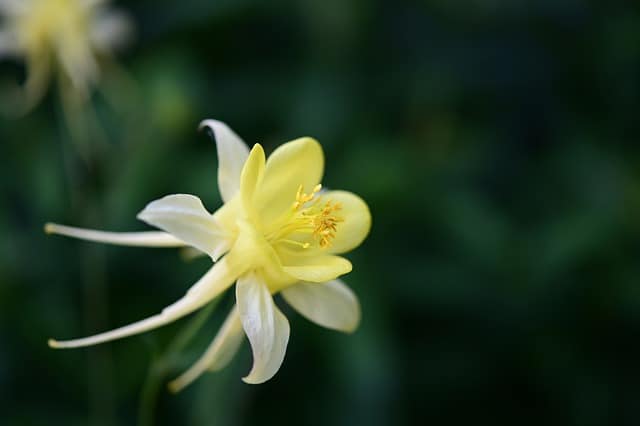Columbine is a beautiful flowering plant that is loved by many gardeners for its delicate and unique blooms. However, one common issue that gardeners may face with columbine plants is yellowing leaves. This can be a frustrating problem to deal with, as it can be caused by a variety of factors.
Understanding columbine plants is key to addressing yellowing leaves. Columbine plants prefer consistently moist soil, but overwatering can lead to root rot and other issues.
Additionally, columbine plants prefer partial shade to full sun, and they require well-draining soil that is rich in organic matter. When these conditions are not met, yellowing leaves can occur.
Key Takeaways:
- Yellowing leaves on columbine plants can be caused by a variety of factors, including improper watering, poor soil conditions, and inadequate light.
- To prevent yellowing leaves, gardeners should ensure that columbine plants are planted in well-draining soil that is rich in organic matter, and they should water the plants consistently without overwatering.
- If yellowing leaves do occur, gardeners should take steps to address the underlying issue, such as adjusting watering practices or improving soil conditions.
Also see:
Understanding Columbine Plants
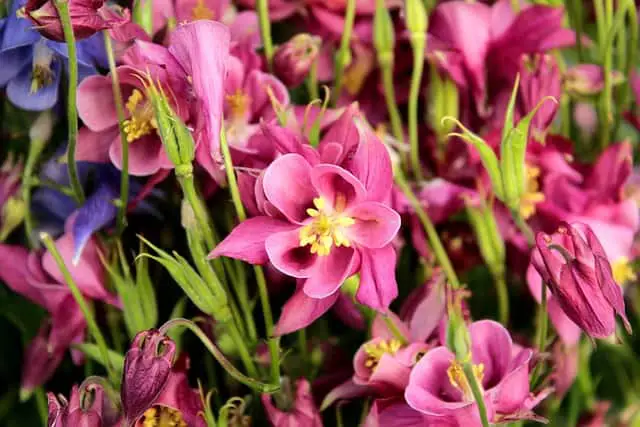
Columbine plants, also known as Aquilegia spp, are short-lived perennials that are popular in gardens due to their unique and attractive flowers. These plants are native to woodland gardens and can grow up to 3 feet tall.
Columbine plants are known for their delicate, bell-shaped flowers that come in a range of colors, including pink, purple, red, yellow, and white. The flowers bloom in the spring and summer and are a favorite of hummingbirds and bees.
While columbine plants are relatively easy to grow, they can be susceptible to a number of issues, including yellowing leaves. This can be caused by a variety of factors, including improper soil moisture, pests, and disease.
It’s important to note that columbine plants are short-lived, typically lasting only 2-3 years. However, they readily self-sow and can form a colony of plants if allowed to go to seed.
Columbine Leaves Turning Yellow – 4 Common Problems
Yellowing leaves in columbine plants can be due to a variety of reasons. Here are some of the most common causes:
1. Environmental Stress
Columbine plants are sensitive to environmental stress, particularly in hot and dry conditions. When the weather is too hot, the plants may not be able to absorb enough water from the soil, causing the leaves to turn yellow and dry out. Similarly, if the soil is too dry, the plants may suffer from water stress, which can also lead to yellowing leaves.
2. Overwatering
Overwatering can also cause yellowing leaves in columbine plants. When the roots of the plant are constantly wet, they may start to rot, which can prevent the plant from absorbing nutrients properly. This can result in yellow leaves and stunted growth.
3. Nutrient Deficiency
A lack of nutrients, particularly nitrogen, can cause yellowing leaves in columbine plants. Nitrogen is an essential nutrient for plant growth, and a deficiency can lead to yellow leaves, stunted growth, and weak stems. Applying a balanced fertilizer that contains nitrogen and other essential nutrients can help to remedy this issue.
4. Pests and Diseases
Pests and diseases can also cause yellowing leaves in columbine plants. For example, aphids can suck the sap from the leaves, causing them to turn yellow and wilt. Similarly, fungal diseases such as powdery mildew can cause the leaves to yellow and develop a powdery coating.
Pests and Diseases Affecting Columbine
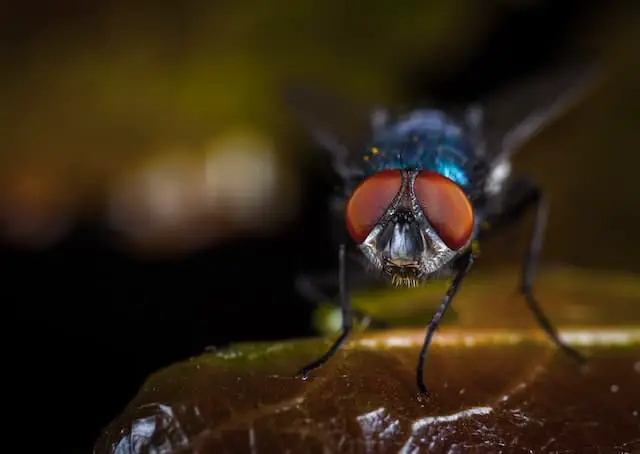
Columbine plants are prone to a variety of pests and diseases that can cause their leaves to turn yellow. Identifying the underlying issue is crucial to finding the right solution. Here are some of the common pests and diseases affecting columbine:
Pests
- Aphids: These small, soft-bodied insects can suck the sap out of the leaves and stems, causing them to turn yellow. They can also transmit viruses and other diseases to the plant. Using insecticidal soap or neem oil can help control aphid infestations.
- Spider Mites: These tiny pests can cause yellowing and stippling of the leaves. They also produce webbing, which can be a telltale sign of their presence. Spraying the plant with a strong jet of water can help dislodge spider mites. Insecticidal soap or neem oil can also be used to control them.
- Sawflies: These pests can cause skeletonization of the leaves, leaving behind only the veins. They can be controlled by handpicking them off the plant or by using insecticidal soap.
- Leaf Miners: These pests tunnel into the leaves, causing them to turn yellow and become distorted. Removing infested leaves can help control the problem. Insecticides can also be used, but they should be applied when the adults first appear.
Diseases
- Fungal Diseases: Several fungal diseases can cause yellowing of the leaves, including powdery mildew and rust. These diseases can be controlled by removing infected leaves and improving air circulation around the plant. Fungicides can also be used to control severe infestations.
- Root Rot: Overwatering or poorly-draining soil can cause root rot, which can lead to yellowing of the leaves. Improving soil drainage and reducing watering can help prevent this problem.
In conclusion, identifying the underlying cause of yellowing leaves in columbine plants is crucial to finding the right solution. By understanding the common pests and diseases that affect these plants, gardeners can take steps to prevent and control these problems.
Influence of Location and Environment
Columbine plants are sensitive to their surroundings, and their leaves may turn yellow due to various environmental factors. Here are some of the most common factors that can influence the health of columbine plants:
1. Location
Columbine plants prefer well-drained soil that is rich in organic matter. They also prefer a slightly acidic soil pH between 5.5 and 7.0. If the soil is too alkaline, the plants may have difficulty absorbing nutrients, which can cause yellowing leaves.
Additionally, columbine plants prefer to grow in areas with partial shade. If they receive too much direct sunlight, their leaves may turn yellow and dry out.
2. Sunlight
Columbine plants require sunlight to grow, but too much direct sunlight can cause their leaves to turn yellow and dry out. If the plants are receiving too much sunlight, consider moving them to a shadier location.
3. Heat and Cold
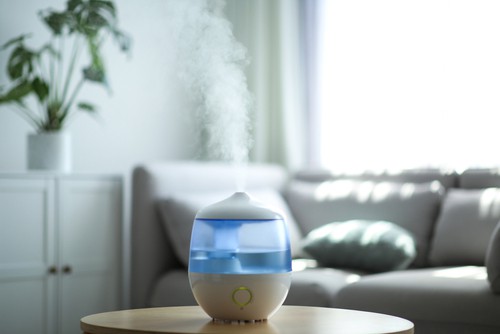
Columbine plants prefer moderate temperatures and can be sensitive to extreme heat or cold. If the plants are exposed to prolonged periods of hot weather, their leaves may turn yellow and dry out. Similarly, if the plants are exposed to freezing temperatures, their leaves may become discolored and wilted.
4. Wind
Columbine plants can be sensitive to strong winds, which can cause their leaves to dry out and turn yellow. If the plants are located in an area with strong winds, consider providing them with some protection, such as a windbreak or trellis.
Watering Requirements and Techniques
Columbine plants require consistent moisture to thrive. Both overwatering and underwatering can cause the leaves to turn yellow and dry up. The best way to water columbine plants is to keep the soil consistently moist but not waterlogged.
The frequency of watering depends on various factors such as the temperature, humidity, and soil type. Generally, it is recommended to water columbine plants deeply once a week.
However, during hot and dry weather, it may be necessary to water more frequently. On the other hand, during rainy periods or in areas with high humidity, it may be necessary to reduce watering frequency to prevent waterlogging.
It is important to water columbine plants at the base of the plant rather than from above. Watering from above can cause the foliage to become wet, which can lead to fungal diseases. Watering at the base allows the water to reach the roots directly and avoids wetting the leaves.
Good drainage is also essential for healthy columbine plants. Poorly drained soil can lead to waterlogging, which can cause root rot and other problems. To ensure good drainage, it is recommended to plant columbine in well-draining soil and avoid planting in areas with poor drainage.
Light and Temperature Needs
Columbine plants require adequate light and temperature to grow healthy and produce beautiful blooms. Here are some things to keep in mind when it comes to light and temperature needs for columbine plants:
Light Needs
Columbine plants need at least 6 hours of sunlight each day to thrive. Lack of sunlight can cause chlorosis, which can turn the leaves yellow. However, direct sunlight can also be harmful to the plant, especially during the hottest part of the day. Therefore, it is best to plant columbine in partially shaded areas that receive at least 6 hours of sunlight each day.
Temperature Needs
Columbine plants prefer cooler temperatures and are not well-suited for hot and humid climates. Extreme heat can cause the leaves to turn yellow and wilt.
On the other hand, cold temperatures can also be harmful to the plant, especially if the soil is not well-drained. Therefore, it is best to plant columbine in areas with moderate temperatures and well-drained soil.
Full Sun vs. Partial Shade
Columbine plants can grow in both full sun and partial shade, but they prefer the latter. Full sun can cause the soil to dry out quickly, especially during hot weather. This can lead to wilting and yellowing of the leaves. On the other hand, partial shade provides the plant with the necessary amount of sunlight while protecting it from the harsh rays of the sun.
Protection from Heat and Cold
Columbine plants can be sensitive to extreme heat and cold. Therefore, it is important to protect them from these conditions. During hot weather, it is best to water the plant regularly to prevent the soil from drying out.
Providing shade during the hottest part of the day can also help protect the plant from the heat. During cold weather, it is important to protect the plant from frost by covering it with a blanket or a tarp.
Nutrient Requirements and Fertilization

Columbine plants require a balanced supply of nutrients to grow healthy and strong. Nitrogen is an essential nutrient that columbines need in sufficient quantities to produce lush foliage and vibrant flowers. A lack of nitrogen can cause yellowing of leaves, stunted growth, and weak stems.
To remedy nitrogen deficiency, a balanced fertilizer containing nitrogen and other essential nutrients should be applied. The fertilizer should be applied once a month during the growing season.
Over-fertilization, however, can cause the leaves to turn brown and dry out. Therefore, it is important to follow the instructions on the fertilizer package and apply the correct amount.
Phosphorus is another essential nutrient that helps with root development and flower production. A lack of phosphorus can cause slow growth and poor flowering. A balanced fertilizer that contains phosphorus can help to remedy this problem.
It is important to note that nutrient deficiencies can also be caused by improper pH levels in the soil. A pH level that is too high or too low can prevent plants from absorbing the nutrients they need. Therefore, it is important to test the soil pH and adjust it if necessary.
Soil Conditions and Preparation
To prevent columbine leaves from turning yellow, it is important to pay attention to soil conditions and preparation.
1. Soil Moisture
Columbine plants require consistent moisture, but overwatering can be just as harmful as under-watering. During hot summer days, columbine plants can turn yellow and end up drying easily if the soil moisture level is not balanced. Therefore, it is important to check the soil moisture level regularly and provide water as needed.
2. Well-Drained Soil
Columbine plants prefer well-drained soil with high organic matter. Poorly drained soil can cause root rot, which can lead to yellowing leaves. Therefore, it is important to ensure that the soil has good drainage.
3. Soil pH
The pH of the soil can also affect the health of columbine plants. If the pH is too high or too low, the plant may not be able to absorb the nutrients it needs, leading to yellowing leaves. It is recommended to test the soil pH and adjust it if necessary.
4. Compost
Adding compost to the soil can help improve soil structure and fertility. Compost is rich in organic matter, which can help retain moisture and provide nutrients to the plant. It is recommended to add compost to the soil before planting columbine.
5. Mulch
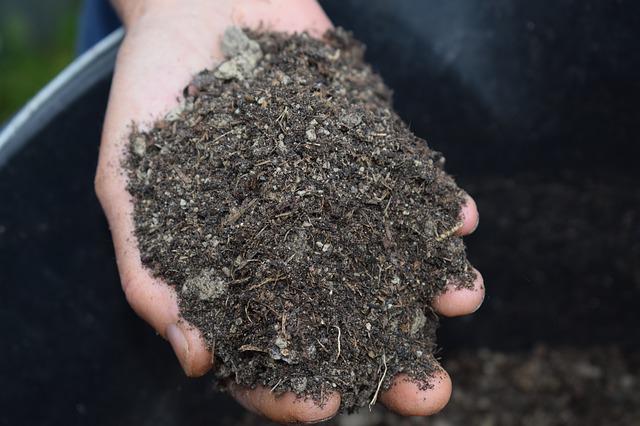
Mulching around the base of the columbine plant can help retain moisture in the soil and suppress weeds. It can also help regulate soil temperature and protect the plant from extreme temperatures. It is recommended to use organic mulch, such as shredded leaves or bark.
6. Ash and Charcoal
Ash and charcoal can be beneficial to the soil, but it is important to use them in moderation. Ash can raise the pH of the soil, while charcoal can improve soil structure and water-holding capacity.
However, too much ash or charcoal can be harmful to the plant. It is recommended to use small amounts of ash and charcoal and mix them into the soil before planting columbine.
Addressing Yellowing Leaves
Yellowing leaves on columbine plants can be caused by a variety of factors, including lack of water, too much water, nutrient deficiencies, and pests. Here are some steps to take to address the issue:
Check Soil Moisture
One of the first things to check when dealing with yellowing leaves on columbine plants is the soil moisture. If the soil is too dry, the plants may not be getting enough water, which can cause the leaves to turn yellow, wilt, and eventually dry up. On the other hand, if the soil is too wet, the roots may be rotting, which can also cause yellowing leaves.
The best way to check soil moisture is to stick your finger about an inch into the soil. If it feels dry, it’s time to water the plants. If it feels wet, it’s best to hold off on watering for a few days.
Adjust Watering Schedule
If the soil moisture is the issue, adjust the watering schedule accordingly. Columbine plants prefer consistently moist soil, so it’s important to water them regularly. However, be careful not to overwater, as this can lead to root rot and other problems.
Check for Nutrient Deficiencies
Yellowing leaves can also be a sign of nutrient deficiencies. In particular, columbine plants need adequate amounts of nitrogen, phosphorus, and potassium to grow and thrive. If the soil is lacking in these nutrients, the leaves may start to turn yellow and eventually brown.
To address nutrient deficiencies, it’s important to fertilize the plants regularly. Use a balanced fertilizer that contains all three major nutrients, and follow the instructions carefully.
Look for Pests
Pests can also cause yellowing leaves on columbine plants. In particular, aphids and spider mites are common culprits. These pests feed on the leaves, causing them to turn yellow, wilt, and eventually fall off.
To address pest problems, it’s important to identify the pest and choose an appropriate treatment. In some cases, simply spraying the plants with a strong stream of water can dislodge the pests and prevent further damage. In other cases, insecticidal soap or other treatments may be necessary.
Preventive Measures and Recommendations
Prevention is the best way to avoid yellowing of columbine leaves. Here are some preventive measures and recommendations that can help keep your columbine plants healthy and vibrant.
Growing Conditions
Columbine plants thrive in partial shade and well-drained soil with high organic matter. Ensure that the soil around the plant base is moist but not waterlogged. Overwatering or underwatering can lead to yellowing of leaves. It is recommended to use a balanced fertilizer to maintain the soil’s nutrient levels.
Location
Columbine plants prefer cooler temperatures and do not tolerate heat and dryness well. It is best to plant them in a location that provides partial shade and protection from direct sunlight during the hottest part of the day.
Neem Oil
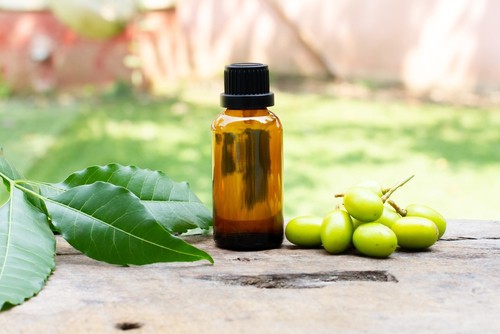
Neem oil is an effective natural pesticide that can help prevent and control pests and diseases that cause yellowing of columbine leaves. It is recommended to apply neem oil spray to the leaves and stems of the plant every two weeks during the growing season.
Recommendations
If yellowing of columbine leaves persists despite preventive measures, it may be a sign of a more serious issue such as a nutrient deficiency or disease. It is recommended to consult a gardening expert or take a sample of affected foliage to your local garden center for analysis and treatment recommendations.
Regional Considerations
Columbine plants are native to the Rocky Mountains and thrive in cool, moist environments. Therefore, it is important to consider regional differences when diagnosing yellowing leaves in columbine plants.
In Arapahoe County, Colorado, where the climate is semi-arid, yellowing leaves in columbine plants may be caused by a lack of water. Columbine plants prefer consistently moist soil, so if they do not receive enough water, they may begin to show signs of stress.
In addition to yellowing leaves, you may notice wilting, drooping foliage and dry soil. It is important to water columbine plants deeply and regularly during dry periods to prevent yellowing leaves.
Different varieties of columbine plants may also have different susceptibility to yellowing leaves. For example, blue and purple columbine plants may be more susceptible to yellowing leaves than red or pink varieties.
If you are experiencing yellowing leaves in your columbine plants, it may be helpful to identify the specific variety of columbine you have planted.
It is also important to consider the soil pH when diagnosing yellowing leaves in columbine plants. If the soil is too alkaline, columbine plants may not be able to absorb the necessary nutrients, leading to yellowing leaves. A soil test can help determine the pH of the soil and whether it is necessary to adjust it to promote healthy columbine plants.
Conclusion
Yellowing of columbine leaves can be caused by a variety of factors, including nutrient deficiencies, overwatering, underwatering, and pests. It is important to identify the underlying cause of the yellowing in order to take appropriate action to remedy the situation.
One common cause of yellowing leaves is a lack of water. Columbine plants prefer consistently moist soil, so if they don’t receive enough water, they may begin to show signs of stress, such as yellowing leaves, wilting, drooping foliage, and dry soil.
On the other hand, overwatering can also lead to yellowing leaves, as it can cause the roots to become waterlogged and unable to absorb nutrients properly.
Another common cause of yellowing leaves is nutrient deficiencies. Columbine plants require a balanced supply of nutrients, including nitrogen, phosphorus, and potassium, to grow and thrive. A lack of any one of these nutrients can cause yellowing leaves, as well as stunted growth and poor flowering.
Pests can also cause yellowing leaves in columbine plants. Common pests that can affect these plants include aphids, spider mites, and leaf miners. These pests can damage the leaves and cause them to turn yellow, as well as stunt the growth of the plant and reduce its overall health.
In order to prevent yellowing of columbine leaves, it is important to provide the plants with the proper care and maintenance. This includes planting them in well-draining soil, providing them with ample sunlight and water, and fertilizing them regularly with a balanced fertilizer.
Frequently Asked Questions
What causes yellowing of columbine leaves?
Yellowing of columbine leaves can be caused by a variety of factors, including improper soil moisture, nutrient deficiencies, pests, or diseases. Overwatering or underwatering can both lead to yellowing of leaves, as can excessive heat or cold temperatures.
Is overwatering a common cause of columbine leaves turning yellow?
Yes, overwatering is a common cause of columbine leaves turning yellow. Columbine plants prefer well-draining soil and can be sensitive to too much moisture. It is important to ensure that the soil is not too wet and that excess water is allowed to drain away.
How can I prevent my columbine leaves from turning yellow?
To prevent columbine leaves from turning yellow, it is important to provide the plants with proper care and maintenance. This includes ensuring that the soil is well-draining and not too wet, providing the plants with adequate sunlight, and fertilizing the plants regularly with a balanced fertilizer.
What are some common diseases that cause yellowing of columbine leaves?
Some common diseases that can cause yellowing of columbine leaves include powdery mildew, leaf spot, and rust. These diseases can be caused by fungal or bacterial infections and can be treated with fungicides or other appropriate treatments.
Does the amount of sunlight affect the color of columbine leaves?
Yes, the amount of sunlight can affect the color of columbine leaves. Columbine plants prefer partial shade to full sun, and too much direct sunlight can cause the leaves to become yellow or brown.
What is the ideal watering schedule for columbine plants?
The ideal watering schedule for columbine plants depends on a variety of factors, including the soil type, temperature, and humidity levels.
In general, it is best to water columbine plants deeply but infrequently, allowing the soil to dry out slightly between waterings. It is important to monitor the soil moisture level regularly and adjust the watering schedule as needed.

Hey, I’m Lisa and I’ve been an avid gardener for over 30 years. I love writing, talking and living in the garden! Feel free to connect with me on my socials below

